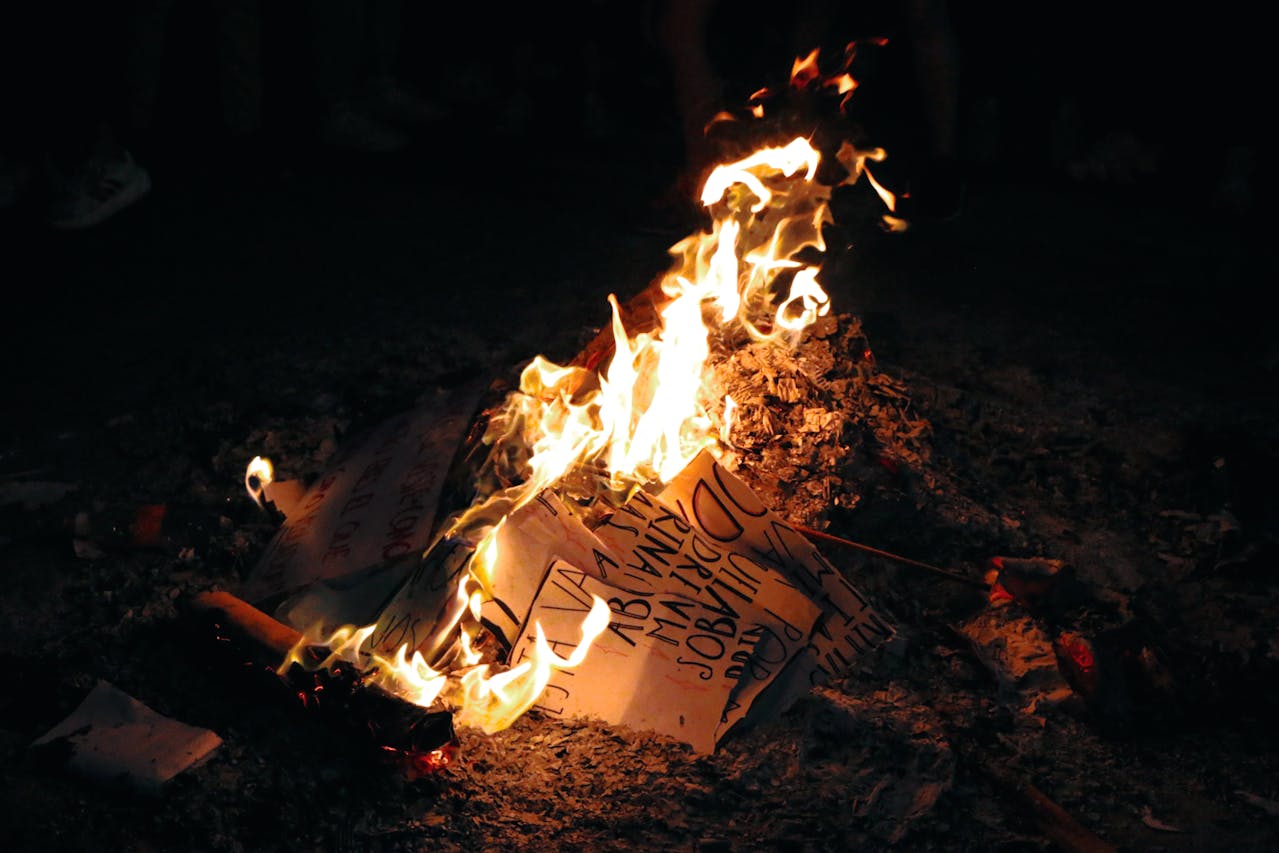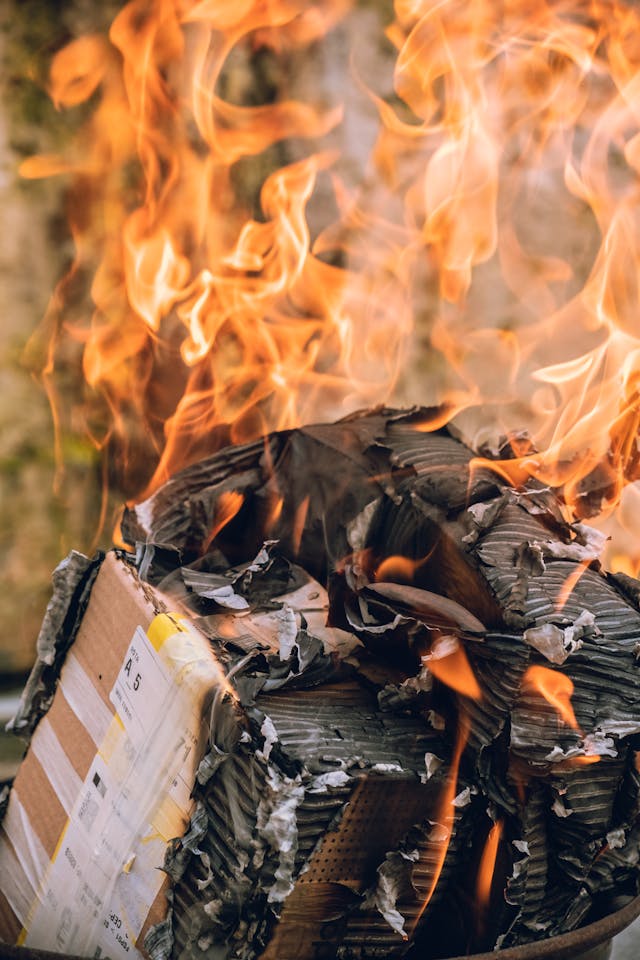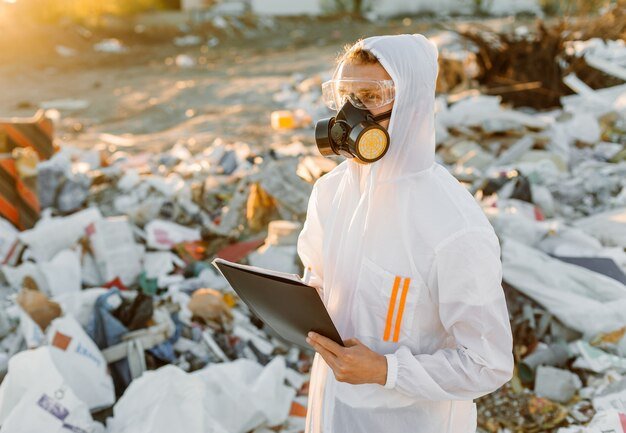Effects of Burning Cardboard on the Environment: A Comprehensive Guide
Cardboard is everywhere. Whether it’s the box your groceries arrived in, the package that protected your new gadget, or the carton storing your old photos, cardboard plays a huge role in our daily lives. It’s light, strong, and inexpensive, making it perfect for packaging and storage. In fact, over 72 million tons of cardboard are produced globally every year—and that doesn’t even include corrugated board, which is an entirely separate category.
But while cardboard is incredibly useful, its disposal poses big challenges. When we burn it, we release harmful pollutants into the air, contributing to environmental issues like climate change. It might not smell as bad as burning plastic, but the damage is real. Recycling is a far better option, yet too often, cardboard ends up in landfills or on fire instead of being reused.
In this guide, we’ll explore what happens when cardboard is burned, why it’s harmful to the environment, and how we can all make smarter choices. Backed by solid research and real-world advice, this article is here to help you understand the problem and take action. Together, we can reduce waste and protect our planet, starting with something as simple as a cardboard box.

In This Article
- The Prevalence of Cardboard Usage and Waste
- The Environmental Impact of Burning Cardboard
- Recycling vs. Burning: The Sustainable Choice
- Alternatives to Burning Cardboard: Simple and Sustainable Choices
- Practical Advice for Households and Businesses: Making a Difference with Cardboard Disposal
- Conclusion: Making a Positive Impact
The Prevalence of Cardboard Usage and Waste
Why Cardboard is Everywhere
Cardboard is the backbone of packaging. In the United States alone, over 90% of products are shipped in corrugated cardboard boxes. Globally, we produce more than 72 million tons of cardboard every year. From protecting fragile items to storing everyday goods, it’s a go-to solution for businesses and individuals alike. But this level of production comes with a cost, both in resources and waste.
A Growing Waste Problem
Here’s the challenge: Cardboard is recyclable, but not all of it ends up being recycled. In fact, cardboard and paper waste together make up 17% of the world’s waste. In the U.S., municipal solid waste (the trash we throw out every day) contains about 10% paper-based materials. That’s a significant chunk of waste filling up our landfills and contributing to environmental pollution.
Learning from the UK’s Recycling Efforts
The United Kingdom offers an inspiring example of how we can handle cardboard waste better. Each year, the UK produces about 5.3 million tons of cardboard. Out of this, a remarkable 70.6% gets recycled. This high recycling rate makes a big difference. For example, recycling efforts in the UK save the equivalent of 34 million trees annually. That’s a staggering number of trees spared from being cut down, preserving forests and all the life they support.
Let’s break this down further:
| Metric | United Kingdom | United States | Global Average |
|---|---|---|---|
| Annual Production (tons) | 5.3 million | ~110 million | >400 million |
| Recycling Rate | 70.6% | ~68% | ~58% |
| Trees Saved Annually (estimate) | 34 million | 100 million+ | ~200 million |
While the UK’s recycling rate is impressive, it’s worth noting that even developed countries like the U.S. fall slightly behind, recycling about 68% of their cardboard waste. Globally, the average recycling rate is lower, hovering around 58%. This highlights a significant gap and a lot of room for improvement, especially in regions with less developed recycling infrastructure.
Why This Matters
Every ton of cardboard we recycle saves precious resources. It means fewer trees are chopped down, less energy and water are used, and fewer greenhouse gases are emitted during the production process. Recycling also reduces the volume of waste clogging our landfills, which helps decrease methane emissions from decomposing organic material.
The Environmental Impact of Burning Cardboard
While cardboard is biodegradable and recyclable, setting it on fire releases harmful pollutants that affect the air, climate, soil, and water. Let’s explore these effects in simple terms so we can better understand the consequences and make informed choices.
Air Pollution and Toxic Emissions
At first glance, burning cardboard might not seem as harmful as burning plastic because it doesn’t produce the same strong chemical smell. However, the reality is more complex. Cardboard is mostly made from cellulose fibres, a natural material derived from plants, but it often contains adhesives, inks, and coatings that add to its utility. When burned, these additives release a cocktail of harmful substances into the air:
- Carbon Dioxide (CO2): Every time we burn cardboard, we’re releasing carbon dioxide, a major greenhouse gas. CO2 traps heat in the atmosphere, contributing to global warming. Even small backyard fires can add up when multiplied across millions of households.
- Black Carbon: This is a sooty substance released when burning organic materials like cardboard. Black carbon is incredibly effective at absorbing sunlight and heating the atmosphere. The Environmental Protection Agency (EPA) describes it as a significant driver of climate change, with effects that go beyond just warming the air—it can also disrupt precipitation patterns and speed up the melting of ice in polar regions.
- Volatile Organic Compounds (VOCs) and Polycyclic Aromatic Hydrocarbons (PAHs): If the cardboard you burn has printed designs or glossy finishes, it’s likely treated with chemicals. When these burn, they release VOCs and PAHs—toxic substances that can harm both humans and the environment. Breathing in these toxins over time can increase the risk of respiratory issues and other health problems.
Impact on Climate Change
Burning cardboard doesn’t just pollute the air—it actively worsens climate change. Open burning releases large amounts of greenhouse gases like CO2 and black carbon into the atmosphere. These emissions warm the planet, causing changes in weather patterns that we’re already starting to see, like severe droughts, intense storms, and unpredictable rainfall.
Black carbon, in particular, has a disproportionate effect. Its ability to absorb sunlight and heat the air means that it accelerates global warming at a faster rate than some other pollutants. Beyond just warming the atmosphere, black carbon settles on snow and ice, reducing their ability to reflect sunlight and speeding up melting. This creates a feedback loop that intensifies the climate crisis.
Learn More: DIY Fire Starters from Household Waste: Sustainable, Safe, and Effective Methods
Soil and Water Contamination
What happens to the ashes after you’ve burned cardboard? Those ashes don’t just disappear harmlessly. Instead, they often end up on the ground or washed into nearby water sources, carrying harmful chemicals with them.
- Soil Contamination: The ashes left behind can leach harmful substances into the soil. Over time, these chemicals can affect plant growth and reduce soil fertility.
- Water Pollution: In areas near rivers, lakes, or other water bodies, rain can wash these ashes into the water. This can harm aquatic life and affect water quality. Contaminants like PAHs are particularly dangerous because they persist in the environment for a long time, affecting ecosystems and potentially entering the food chain.

Recycling vs. Burning: The Sustainable Choice
Why Recycling Wins
Recycling is not just about feeling good; it has real, measurable benefits for the environment. Let’s break it down:
1. It Saves Trees
Every time we recycle cardboard, we save trees from being cut down. Think about this: recycling one ton of cardboard can save up to 17 trees. Now multiply that by millions of tons of cardboard recycled worldwide each year—the impact is huge. Trees are vital not only for producing oxygen but also for absorbing carbon dioxide, a greenhouse gas that contributes to global warming.
2. It Conserves Energy and Water
Producing cardboard from recycled materials uses significantly less energy and water compared to making it from scratch. For instance, a study by the University of California, Berkeley suggests that recycling uses about 25% less energy and 60% less water. That’s a win-win for both the environment and the industries that rely on these resources.
3. It Reduces Landfill Waste
When cardboard is recycled, it doesn’t end up in a landfill where it would slowly break down and release methane, a potent greenhouse gas. Instead, it gets a second (or third, or fourth) life as new packaging. Less landfill waste means fewer emissions and less land dedicated to waste storage.
The Limitations of Recycling
Recycling cardboard isn’t perfect. Each time cardboard is recycled, the fibres break down a little more, which means it can only go through the process about seven times before it becomes too weak to use. But that’s not the end of the road! Cardboard that can no longer be recycled can be composted or repurposed, extending its usefulness even further.
How Does the World Measure Up?
Not all countries are equally committed to recycling. Here’s a snapshot of recycling rates by region:
| Region | Recycling Rate |
|---|---|
| Europe | 72.4% |
| North America | 68% |
| Asia | ~40% |
| Africa | <30% |
- Europe: Europe leads the way with an impressive recycling rate of 72.4%. Countries like Germany and the Netherlands have robust recycling systems in place.
- North America: The United States is making strides, with its recycling rate climbing from 33.5% in 1990 to 68% today.
- Asia and Africa: These regions lag behind, often due to limited infrastructure and public awareness. However, efforts are underway to improve recycling systems.
Alternatives to Burning Cardboard: Simple and Sustainable Choices
1. Composting: Turn Cardboard into Plant Food
Did you know that cardboard can improve your garden soil? It’s compostable and breaks down naturally. Here’s how you can do it:
- Shred the Cardboard: Tear it into small pieces to help it break down faster.
- Mix with Organic Waste: Combine it with kitchen scraps like fruit peels and vegetable leftovers. This creates a balanced compost pile.
- Maintain Moisture and Aeration: Keep the pile slightly damp and turn it regularly to let in air. This speeds up the composting process.
Composting cardboard is an easy way to enrich the soil for your garden while keeping waste out of landfills.
2. Reuse and Repurpose: Get Creative
Before throwing out your cardboard, think about how you could use it again. Here are some ideas:
- Storage Solutions: Use boxes to store toys, books, or tools. They’re sturdy and practical.
- DIY Projects: Turn cardboard into creative crafts, like making playhouses or puzzles for kids.
Reusing cardboard is a fun and cost-effective way to reduce waste.
3. Donate or Sell: Help Someone Else Use It
If you don’t need the cardboard, give it a second life by donating or selling it:
- Donate: Check if local recyclers, schools, or charities can use it for their projects.
- Sell: Some scrap collectors buy old cardboard for recycling. It’s a simple way to make a bit of money while helping the planet.
| Option | Benefits |
|---|---|
| Composting | Enriches soil and reduces landfill waste |
| Reuse/Repurpose | Saves money and encourages creativity |
| Donate/Sell | Supports recycling and benefits others |
By choosing these alternatives, you’re doing your part to protect the environment. Small actions can lead to big changes—start with your cardboard!
Practical Advice for Households and Businesses: Making a Difference with Cardboard Disposal
For Households
1. Separate Cardboard Waste
One of the easiest ways to start is by sorting your cardboard waste. Clean cardboard—like boxes from online shopping should go into your recycling bin. Greasy or food-soiled cardboard, like pizza boxes, can’t be recycled, but works great for composting. By separating clean and soiled pieces, you’re ensuring that materials are reused efficiently and don’t end up polluting the environment.
2. Educate and Involve Family Members
Recycling can be a family activity. Teach your kids why recycling matters and make it fun. For instance, turn sorting cardboard into a game or let them use old boxes for creative DIY projects, like building forts or organising toys. This not only gets everyone involved but also builds lifelong habits in the next generation.
For Businesses
1. Partner with Recycling Facilities
Businesses often deal with large volumes of cardboard, so it’s crucial to have a plan. Partner with local recycling facilities to ensure your cardboard waste is handled properly. Many facilities offer regular pick-up services, making it easy to stay consistent with recycling efforts.
2. Invest in Efficient Packaging
Consider how much cardboard your business uses. Can you reduce it? Switching to minimal or reusable packaging is not only environmentally friendly but also cost-effective. For example, using smaller boxes or eliminating unnecessary layers can save resources while still protecting your products.
3. Conduct Awareness Campaigns
Educate your employees about the importance of proper cardboard disposal. Simple steps like placing clear recycling bins around the office or warehouse can make a big difference. Additionally, sharing facts about how recycling benefits the environment can inspire employees to be more mindful.
Learn More: Why Is Green Living Important? Benefits Your Life and the Planet
Expert Opinions and Insights
Dr. Emily Carter, a renowned environmental scientist, puts it simply: “While cardboard is considered sustainable, improper disposal through burning is counterproductive. Recycling or composting not only conserves resources but also significantly reduces greenhouse gas emissions.”
Her words highlight an important truth—choosing to recycle or compost cardboard can help combat climate change and reduce our overall carbon footprint. It’s a small step with big implications for our planet’s health.
A Quick Comparison of Actions
| Action | Impact |
|---|---|
| Separating clean and soiled waste | Ensures efficient recycling and composting |
| Educating family or employees | Builds long-term habits and awareness |
| Partnering with recyclers | Guarantees proper disposal for large volumes of waste |
| Using minimal packaging | Reduces waste generation and saves resources |
| Conducting awareness campaigns | Encourages collective action within organizations |
Conclusion: Making a Positive Impact
Burning cardboard, though convenient, has detrimental effects on the environment. From releasing greenhouse gases to contributing to climate change, it’s a practice we must move away from. Instead, recycling, composting, and repurposing offer sustainable alternatives that conserve resources and protect the planet.
Actionable Steps:
- Recycle whenever possible. Find certified facilities in your area.
- Compost soiled cardboard to enrich the soil naturally.
- Educate yourself and others on the harmful effects of burning and the benefits of sustainable practices.
By making these choices, we can collectively reduce our environmental footprint and contribute to a healthier, more sustainable future.







